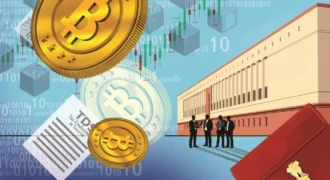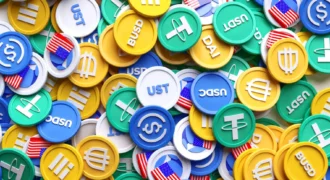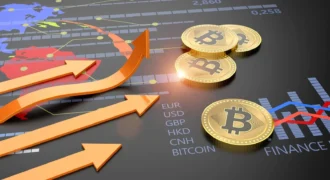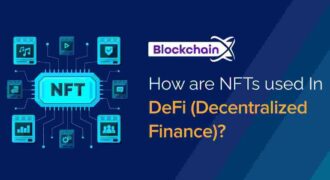Gaming has always been a hub for innovation, storytelling, and community. But the rise of Web3 technology is transforming it into something entirely new — a universe where players own assets, earn rewards, and influence the game economy. Welcome to the era of Web3 gaming.
From play-to-earn (P2E) models to NFT-powered in-game items and fully immersive blockchain worlds, Web3 is redefining how games are played, monetized, and experienced. But what does this shift really mean for players, developers, and the gaming industry at large?
What Is Web3 Gaming?
Web3 gaming combines blockchain technology, decentralized finance (DeFi), and non-fungible tokens (NFTs) to create games where players can truly own digital assets, earn rewards, and participate in decentralized governance.
Traditional games lock assets and currencies within centralized servers — if a platform shuts down, players often lose everything. Web3 gaming changes that by tokenizing in-game assets, giving them value outside the game and the freedom to trade or sell them on blockchain marketplaces.
In short, Web3 games turn players into stakeholders, not just participants.
The Play-to-Earn Revolution
The cornerstone of Web3 gaming is the play-to-earn (P2E) model. Unlike traditional games, where fun is the primary reward, P2E games compensate players with crypto tokens, NFTs, or other blockchain assets for time, skill, and engagement.
How P2E Works:
- Players earn cryptocurrency or tokens by completing quests, winning battles, or achieving milestones.
- Tokens can be used in-game for upgrades, traded on exchanges, or staked for additional rewards.
- Rare in-game items are minted as NFTs, granting players provable ownership and scarcity.
Popular examples include:
- Axie Infinity: Players breed, battle, and trade NFT creatures to earn the AXS and SLP tokens.
- The Sandbox: Users create, trade, and monetize virtual land, earning SAND tokens.
- Illuvium: A blockchain-based RPG where players collect NFT creatures and participate in tournaments for rewards.
P2E models blur the line between gaming and earning, creating opportunities for players worldwide to generate real income while engaging in immersive gameplay.
NFTs: The Backbone of Web3 Gaming
Non-fungible tokens (NFTs) are at the heart of Web3 gaming. Unlike fungible tokens (e.g., Bitcoin or Ethereum), NFTs are unique digital assets representing in-game items, avatars, skins, or virtual land.
Why NFTs Matter in Gaming:
- True Ownership: Players fully own digital assets, verifiable on the blockchain.
- Interoperability: Some NFTs can be used across different games or platforms.
- Scarcity and Value: Rare items can gain real-world value.
- Trade and Monetization: Players can sell or lease NFTs in marketplaces like OpenSea, Rarible, or game-specific exchanges.
NFTs give players control and flexibility, transforming in-game purchases from consumable items into investable assets.
Blockchain Worlds and Metaverse Integration
Web3 gaming isn’t limited to individual titles — it’s part of a larger vision for immersive blockchain worlds and the metaverse.
- Virtual Economies: Games create self-sustaining economies where players trade tokens, NFTs, and digital goods.
- Decentralized Governance: Many blockchain worlds allow players to vote on game updates, rules, and future content using DAOs.
- Cross-Platform Assets: Web3 wallets allow users to carry assets across multiple games or virtual worlds, creating interconnected experiences.
Examples of blockchain worlds:
- Decentraland: Users buy, develop, and monetize virtual land using MANA tokens.
- Somnium Space: Offers VR integration for fully immersive virtual experiences.
- Star Atlas: A space-themed blockchain game blending strategy, exploration, and tokenized assets.
These worlds are creating persistent, player-driven economies, fundamentally changing how games are played and valued.
Benefits of Web3 Gaming
- Player Empowerment: Players gain true ownership and control over digital assets.
- Monetization Opportunities: Gaming can become a source of income through P2E models and NFT trading.
- Transparency: Blockchain ensures fair gameplay, verifiable transactions, and immutable records.
- Community Governance: Players can participate in decisions affecting game development and rules.
- Innovation in Game Design: Web3 allows developers to experiment with tokenomics, cross-game interoperability, and decentralized economies.
Challenges Facing Web3 Gaming
Despite its promise, Web3 gaming faces hurdles:
1. High Entry Barriers
- Some P2E games require initial investments in NFTs or tokens.
- Hardware or blockchain knowledge can be a limiting factor for new players.
2. Market Volatility
- Token values can fluctuate wildly, impacting player earnings.
- Over-reliance on speculative incentives could undermine long-term gameplay engagement.
3. Scalability and Network Fees
- Popular games on Ethereum may face high gas fees, limiting accessibility.
- Layer-2 solutions and alternative blockchains are addressing these challenges.
4. Regulatory Uncertainty
- Earning through games may fall under financial or tax regulations in certain regions.
- Developers and players need to stay informed about local laws.
5. Game Design Risks
- Poorly designed tokenomics or governance structures can lead to imbalanced economies or exploitation.
Africa’s Growing Web3 Gaming Scene
Across Africa, Web3 gaming and P2E models are gaining traction:
- Young gamers in Nigeria, Kenya, and South Africa are earning income from P2E platforms, sometimes rivaling traditional jobs.
- NFTs and digital collectibles are becoming part of cultural expression and entrepreneurship.
- Web3 gaming provides access to global markets without the need for banks or intermediaries.
The combination of digital creativity, blockchain access, and economic empowerment positions Africa as a promising hub for Web3 gaming adoption.
The Future of Web3 Gaming
Web3 gaming is evolving rapidly:
- AI Integration: Predictive AI could enhance gameplay, dynamic economies, and asset recommendations.
- Cross-Chain Interoperability: Players could carry assets across multiple blockchains and games.
- Enhanced Immersion: VR and AR integration could make blockchain worlds fully immersive.
- Sustainable Game Economies: Layer-2 solutions and eco-friendly protocols may reduce energy costs.
- Player-Led Innovation: DAOs and community governance will continue to shape the evolution of game worlds.
In the near future, gaming may become a fully decentralized, player-driven ecosystem, where virtual achievements translate into real-world value.
Conclusion
Web3 gaming represents a paradigm shift — transforming players from passive participants into active stakeholders, investors, and co-creators. With play-to-earn models, NFT assets, and blockchain worlds, games are no longer just entertainment; they are decentralized economies with global reach.
For players, Web3 gaming offers ownership, opportunity, and influence. For developers, it opens doors to innovation, tokenized economies, and community-driven growth.
The gaming industry is evolving faster than ever. In this decentralized era, those who embrace Web3 technologies, NFTs, and blockchain worlds will shape the future of gaming — and the digital economy itself.



